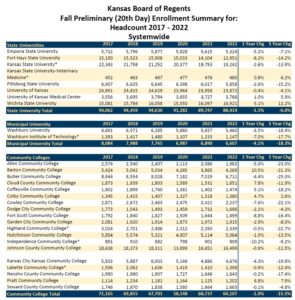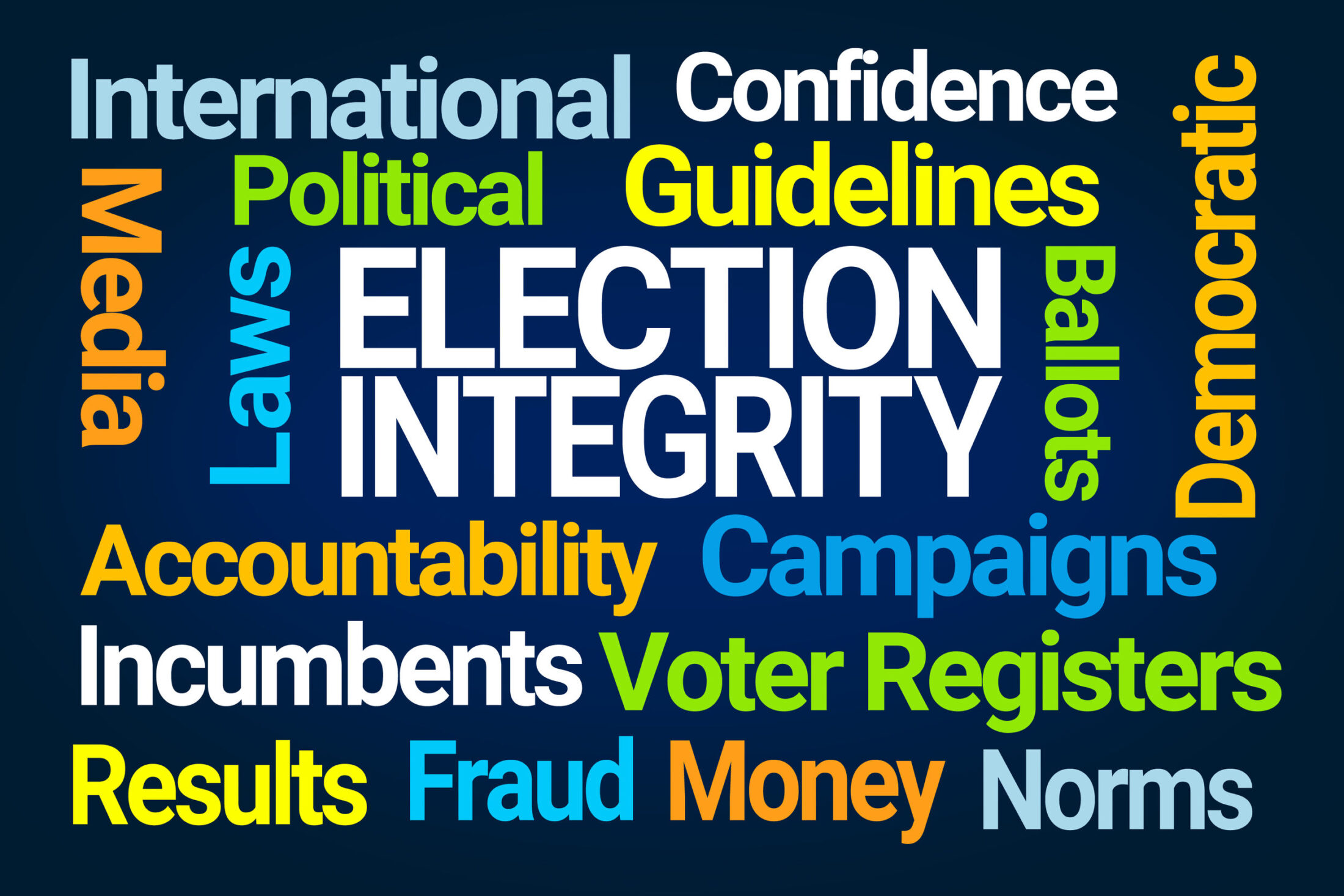Nationwide enrollment in post-secondary education has been dropping for years, and with the exception of Wichita State, it’s also true of state universities in Kansas, according to enrollment data obtained from the Kansas Board of Regents.
A few, notably Wichita State University, and a few community colleges, such as Pratt Community College, are bucking that trend.
Most of the four-year universities in the state have seen a drop both year-over-year and a more significant overall drop on a rolling five-year average.
Fall enrollment figures for the regents universities show a 1.5% overall drop in enrollment over the fall semester of 2021 and a 6-point drop over the last five years.

Wichita State is a significant outlier, having had a year-over-year enrollment increase of 5.1% in total headcount enrollment and 12.2% over the last five years.
By contrast, Kansas State University is down 2.6% over last year and 13.9% since 2017. Fort Hays State is down 8.2% year-over-year and 14.2% in the last five. Pittsburg State is down 2.6% over 2021 and 15.2% since 2017. The University of Kansas has comparatively bucked the trend — but remains down — with just a 0.4% one-year drop and down 4.1% over the last five years.
At the community college level, Butler Community College has seen the greatest decline at 4.4% over 2021 and a whopping 25% drop since 2017.
Pratt Community College, by contrast, is up 6.8% over last year and 7.9% ahead over the last five years.
Headcount enrollment in technical colleges increased 6% over last year and is 15.8% higher over the previous five years.
Why is enrollment dropping?
The Sentinel reached out to all the state universities as well as to Butler and Pratt community colleges, asking about these trends and how schools in positive territory are managing it.
Fort Hays, Wichita State, K-State, KU, and Fort Hays all responded on the four-year side; Emporia and Pittsburg state universities did not. BCC president Dr. Kim Krull responded, but Pratt Community College did not.
Several of the schools in negative territory blamed the pandemic for much of the drop, but while the pandemic may have accelerated the trend — with the exception of Fort Hays, which had posted growth every year up to 2019 — it cannot be blamed as the sole cause of enrollment losses.
“Prior to the global pandemic, FHSU posted 19 straight years of enrollment growth,” FHSU Chief Communications Officer Scott Cason said. “Like many universities in America today, FHSU is adjusting to fundamental changes in the higher education marketplace. The primary drivers behind these changes include concerns about college affordability and student debt and a strong labor market. As a university whose service area is located in rural Kansas, a strengthening labor market and a long-term decline in rural population have been particularly disruptive.”
Butler President Kim Krull echoed some of those sentiments, acknowledging the pandemic increased the trend for her institution.
“COVID and the aftereffects have accelerated the enrollment “Industry wages have increased significantly and individuals are choosing to work because both good part-time and full-time jobs are available.”
Additionally, Krull echoed the sentiment that there is a perception “in general that college is too expensive” and students “don’t want to incur debt.”
“Students may not see the longer term benefit of a college education when they can find a job now and earn a good living,” Krull said.
Karen Goos, vice-provost for enrollment management at K-State, likewise noted many prospective students are not seeing a high enough cost-benefit ratio in a traditional university.
“Despite data to support the personal and economic benefits of a degree,” she said. “A strong job market with lower unemployment rates provides an opportunity to go directly into a job or defer school a year or two and some students are seeking alternatives to the traditional university experience to gain professional certificates and skills in lieu of a degree.
KU did not directly address their decline, other than to point at national trends, and KU Director for News and Media Relations Erinn Barcomb-Peterson, correctly noted that KU has to some degree, bucked the national trend with the smallest year-over-year and five-year losses in the state.
How to fix it?
Wichita State University Provost and Executive Vice President Shirley Lefever said WSU has had as a priority keeping costs down — something Fort Hays has said they are doing as well — and making higher education easier to access.
“Another big key factor that can’t be overlooked is WSU’s applied learning model, which is different from nearly every other university in the country,” Lefever said. “WSU students earned $28 million in applied learning opportunities through Wichita State in 2022 (the latest numbers available). This happens through our partnerships with the nearly 50 businesses on our Innovation Campus, as well as through relationships with businesses in the Wichita area.”
Krull says BCC is also working on more apprenticeships and on-the-job training opportunities, as well as increasing access to financial aid and scholarships to help keep costs down.
All of the schools will enrollment declines said they were implementing strategic plans and working to improve graduation and retention rates.
KU, in particular, said they were working on recruitment, particularly out of state, and referenced the “high profile” of KU athletes.
For most of the schools who responded, cost containment for students was a priority — a tacit acknowledgment that the cost of a college degree has risen to levels many students may find unsustainable — given that just since 2000, the average price for a four-year degree nationwide has increased nearly 180%.



